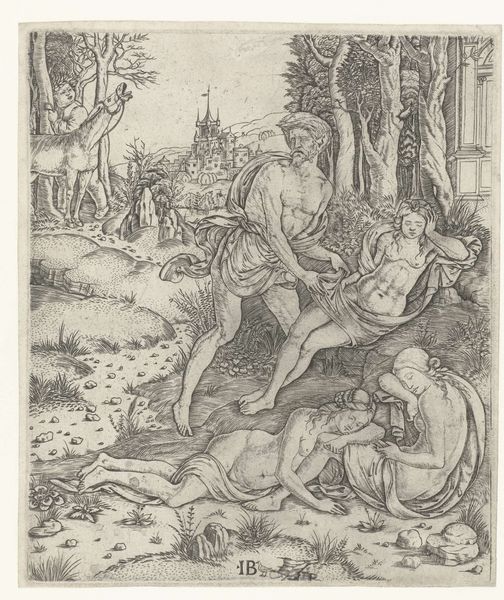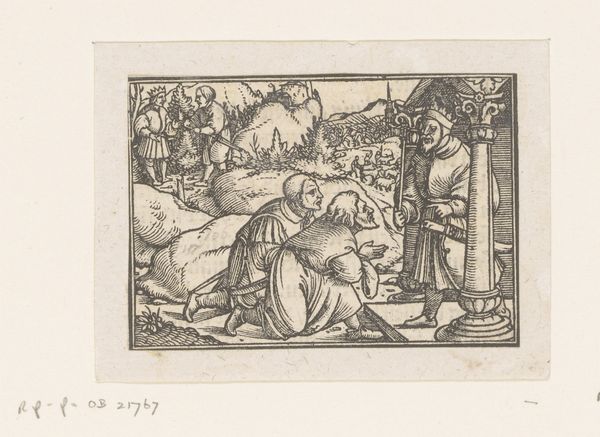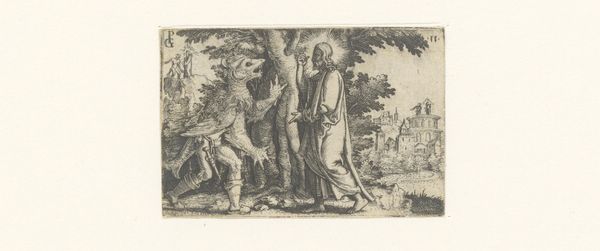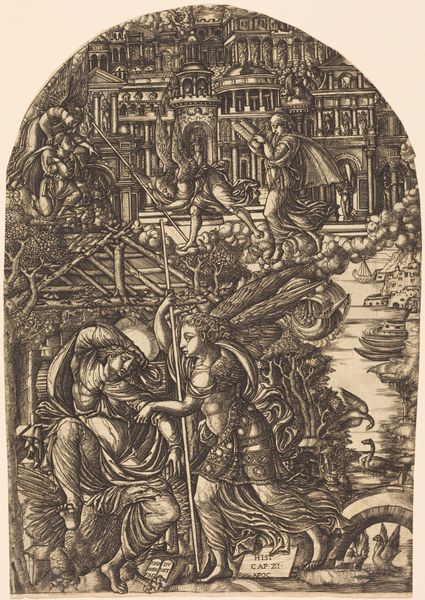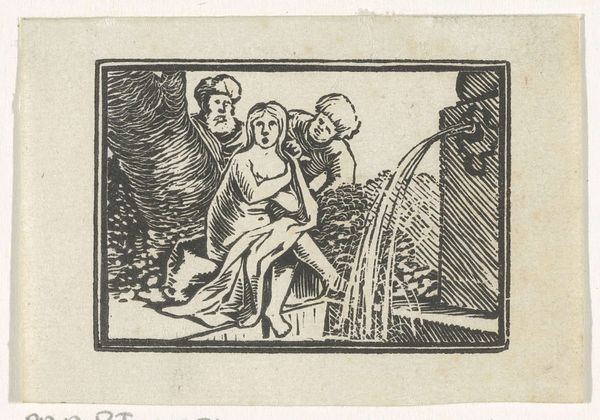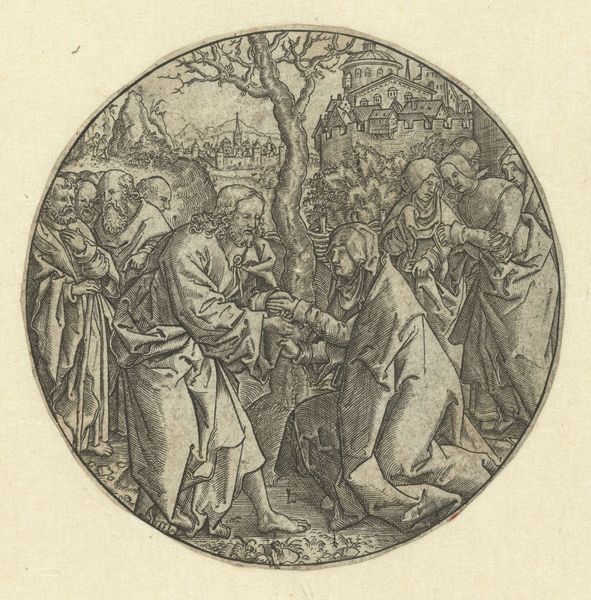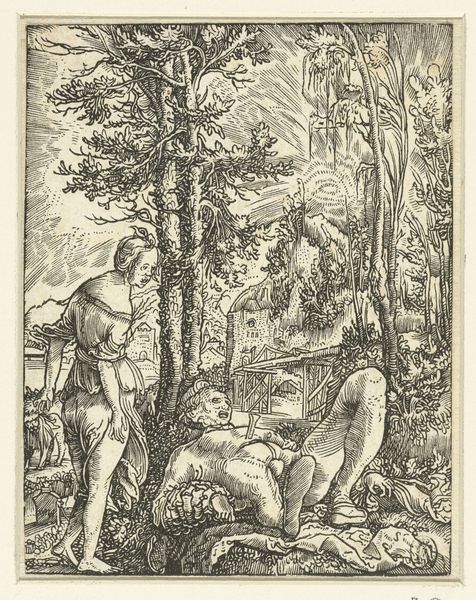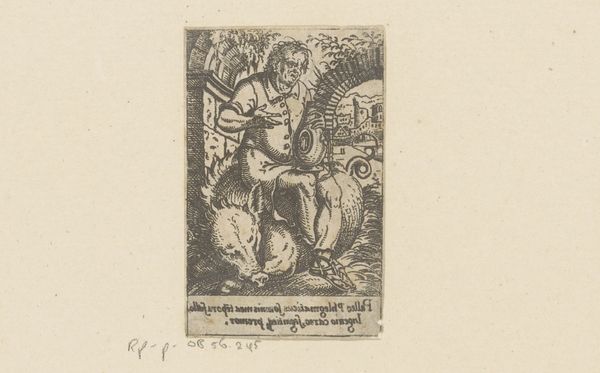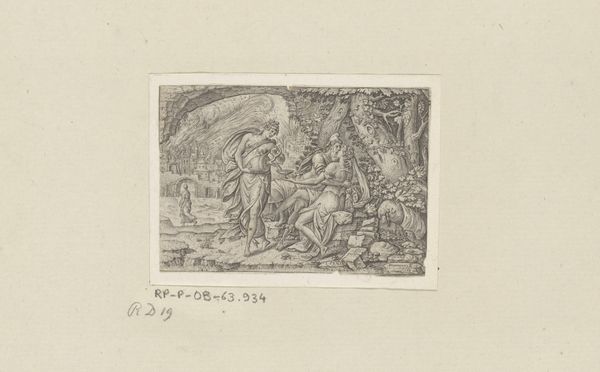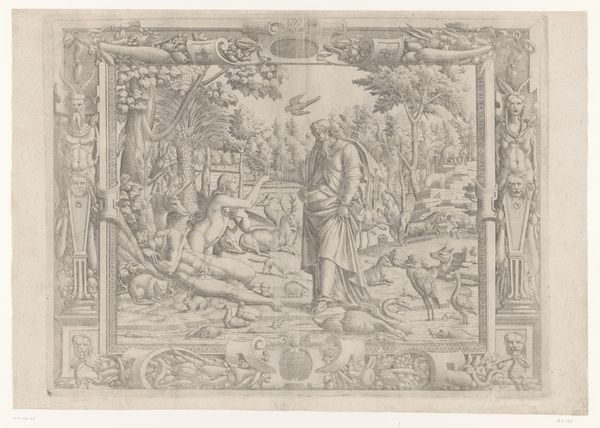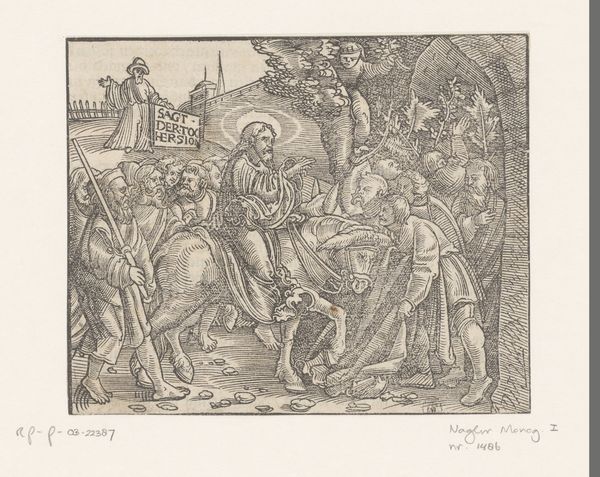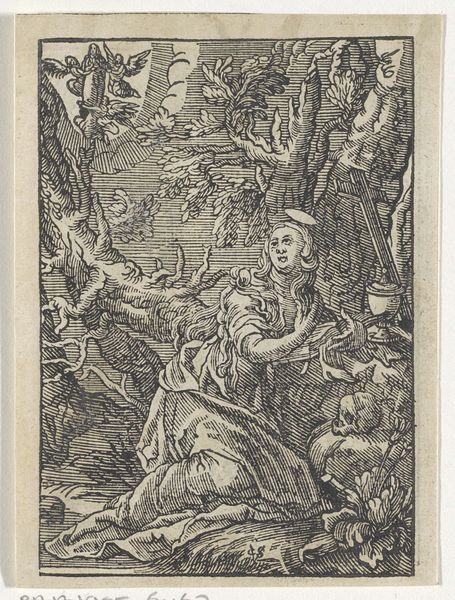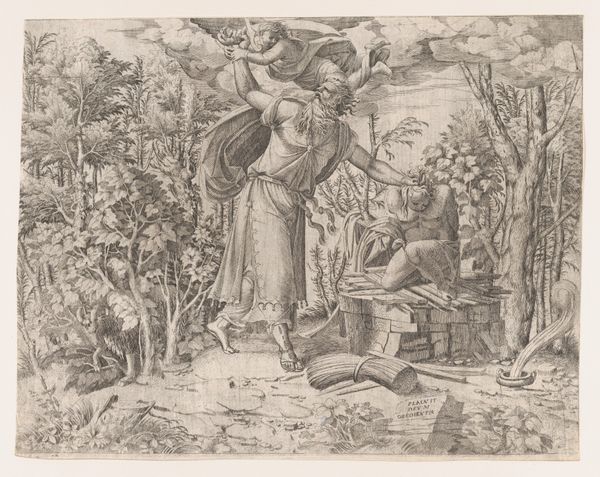
drawing, print, intaglio, woodcut, engraving
#
drawing
#
narrative-art
#
pen drawing
# print
#
intaglio
#
landscape
#
figuration
#
11_renaissance
#
woodcut
#
line
#
history-painting
#
northern-renaissance
#
engraving
Dimensions: height 45 mm, width 59 mm
Copyright: Rijks Museum: Open Domain
Curator: Welcome. This engraving, from around 1591, depicts the crucifixion, focusing on the moment Longinus pierces Christ's side. It’s titled “Christus aan het kruis met Longinus die hem in zijn zij steekt” and resides here at the Rijksmuseum. Editor: Woah, it's intense! The artist's use of just black lines is really stark. You feel the harshness of the scene—almost too blunt, as though empathy got flattened under historical accuracy. But isn't that sort of honesty more vital sometimes? Curator: Northern Renaissance art often embraced realism, but through distribution as prints like this one, this narrative art reached a broad public, shaping perceptions of biblical stories. The small scale invites intimate contemplation, but also mass distribution. Editor: Right, but look at those people on horseback! They seem so stiff. And yet, the raw emotion, it gets under my skin! Is that intentional stiffness—a comment on power maybe? I suppose everyone copes differently. Curator: The engraving is indeed very dense. Think of the cultural climate. Printmaking was vital for disseminating knowledge and, inevitably, propaganda during the Reformation and Counter-Reformation. This image serves a clear didactic function. Editor: True, and now, after all this time, what stories it tells! Its small size hides so much turmoil, the density giving way to personal visions. To witness such trauma represented like this… what were you doing in '91? Haha! Curator: 1591 was quite a year indeed, yet for me, its significance remains rooted in how it demonstrates print's power as a vehicle for cultural values during this formative period. Editor: It hits harder knowing these lines once reshaped the way societies understood life, death and religion! Thanks, lines. Curator: It's fascinating to observe how the intersection of artistic skill, religious fervor, and political context manifested in works such as this. Editor: Absolutely. So glad we got to dig into it together—totally changed my perception.
Comments
No comments
Be the first to comment and join the conversation on the ultimate creative platform.
